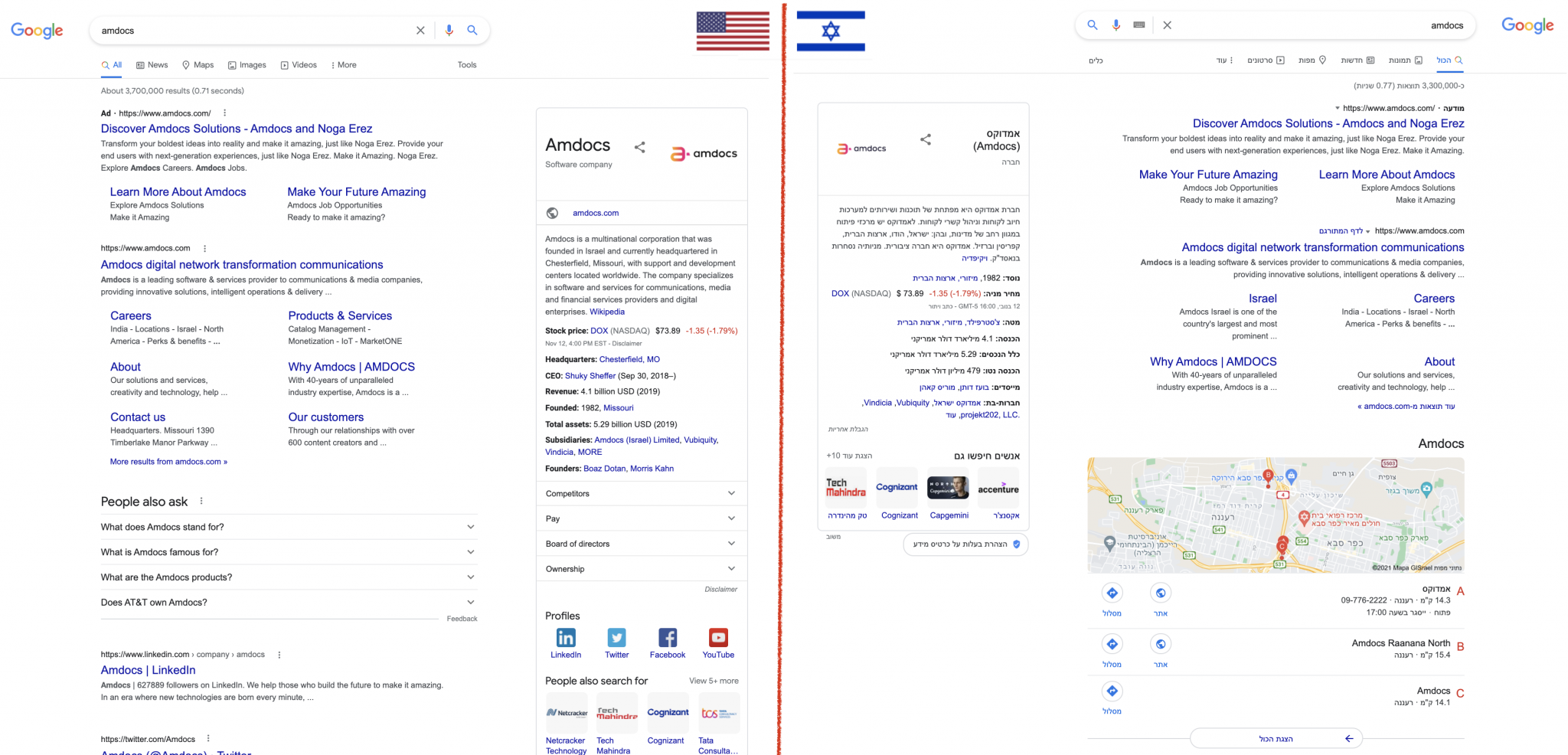Business Talk with Jason Barnard

Published on The Times of Israel November 22, 2021 (Joseph J. Sherman)
Israeli companies dedicate tremendous resources to building successful digital presences, including content, social media, and advertising. Impressively Israeli Start-Ups and Scale-Ups have developed many innovative companies in the space. However, amidst this success, I have seen how many Israeli companies often overlook or underestimate the importance of their Brand SERP.
To understand what Israeli businesses should know about Brand SERPs, I turned to one of the industry’s leading experts. Jason Barnard (The Brand SERP Guy®) is a digital marketer who specializes in Brand SERP optimization and knowledge panel management. He is the founder and CEO at Kalicube - a groundbreaking digital marketing agency that, through the Kalicube Pro™ SaaS platform, helps clients optimize their Brand SERP and manage their knowledge panel.
Why Should Israeli Brands Pay Attention to What Those Clients and Prospects See When They Google Your Brand Name?
Let me first provide a simple definition. I talk about the “Brand SERP’ for a company. It is the Google result your audience sees when they search your brand name. As you have probably realized, your Brand SERP is essential to the bottom line of your business. What your audience sees when they google your brand name is effectively your online business card. Everyone important to your business will google your brand name at some point in their journey, either to research you or to navigate to your website. However, many companies don’t consider that everyone they do business with will see that “Google Business Card” at some point.
That makes it the most critical search result for your business.
Is It the Same as What Your Audience Sees in Israel? Why Not?
Google your brand name now. If you use Google, you’ll see the local version of your “Google Business Card.” If you use Bing, you’ll see the local version of your “Bing Business Card.”
But what does your international audience see? Google, Bing, and other search engines significantly adapt results to the geo-localization of the searcher. Thus, your global audience almost certainly does not see the same Brand SERP you see on the computer in your office or the mobile phone in your hometown.
For the sake of your business, you need to consider what they see and how that affects their perception of your brand both at home and abroad.
Can a Brand See What People in Different Markets and Countries See When They Search for Them?
There are some great platforms such as SE Ranking, SEMrush, and Rank Ranger that offer affordable tracking solutions for SEO. But, generally speaking, companies using these SEO platforms don’t track their brand name. That is, in my opinion, a mistake. Tracking your brand name as a keyword on platforms like these is a cost-effective and straightforward way to understand what your “Google Business Card” looks like across multiple locations and get insights into what your audience sees when they google your brand name. And that is a great start.
At Kalicube, we have taken that several steps further. First, we specialize in Brand SERPs - the search results your audience sees when they google your brand name. As a result, we can offer a better representation of what your audience sees, a better analysis of the anatomy of your “Google Business Card,” and more pertinent tracking over time. Plus, we can offer a dedicated, specialized, and expert analysis of what is right, wrong and what can be done to optimize.
If a Company Is Trying to Find the “Low Hanging Fruit” - The Best Conditions to Make a Sale or Land Clients, Can They See Where They Get the Best/Most Positive Coverage?
The place to start is absolutely the results you control. This is an aspect of digital marketing and SEO that is almost always overlooked and underestimated. Look at your Brand SERP and identify the results where you have control: your website, social profiles, review platforms, etcetera. More often than not, even on results a brand controls, the brand message these results convey is inaccurate, incomplete, or “off-message.” Given that you control those results, the first step for any brand is to correct them. Simple, effective, and immediately visible to your audience (and your boss).
How Can They Find Problem Areas?
Your Brand SERP is an inexhaustible source of insights into your brand’s ecosystem: the good, the bad, and the ugly. By googling your brand name in relevant locations and analyzing the results with a neutral eye, you’ll immediately see where the problem areas are.
The process is simple:
- Start with page 1 and rectify anything imperfect, inaccurate or negative there.
- Move onto page 2 and do the same.
- Move on to page 3.
How Much Would an Israeli Company’s Brand SERPS Vary Internationally?
All brands with an international presence need to deal with the geo-localized versions of their Brand SERP. If the company has a dedicated language version corresponding to the territory, they can generally expect their homepage to rank #1. But from there on, the differences start to kick in, and the management and optimization of the geo-localized Brand SERP become trickier.
Where Do You Start?
I recommend starting with Rich Sitelinks that appear right under the homepage at the top of the Brand SERP because they assist your audience in getting straight to specific, helpful pages on the brand’s website. Often easy to get, but not a given. They are heavily dependent on website structure and page content.
Then look slightly deeper. Remember that Google aims to present a balanced and helpful representation of the brand to its user. And the geo-location of the searcher plays a massive role.
The news articles about the brand that rank in any given country will be the most relevant to that geo-market. The brand’s social channels that rank will be the ones that have the most traction in that geo-region. And the review sites that rank for a search on your brand name will be the ones that are most appropriate for customers in that region.
And if that isn’t enough to get an international brand manager thinking, worried and excited all at the same time, then look at Rich Elements (aka SERP features). In one territory, you may see videos. In another, you may see Twitter Boxes. In another, you may see Image Boxes. In another, you may see a Knowledge Panel.
How Often Are Brand SERPS Different Across Territories?
Brand SERPs always differ across territories. Often quite significantly. Far from being a problem, that is a good thing since it gives any smart international brand manager incredible insights into the market and their strengths and weaknesses in any global market they are targeting.
In short, leverage your Brand SERP at home and abroad to understand the market, your position in that market… and your strengths and weaknesses in every territory you want to dominate.
Can You Share an Example Using an Israeli Company?
Take a look at this simple example with Amdocs. It applies to every Israeli brand with international ambitions. Amdocs Brand SERP
Amdocs Brand SERP
These are just two countries. But you will immediately appreciate the wildly different results around the globe and the significance of your international strategy.
Some differences that immediately leap to the eye:
In Israel, Amdocs has a localized result with a Map Pack, 7 Rich Sitelinks, and a pretty informative knowledge panel. In the US, they have different Rich Sitelinks, 4 People Also Ask questions, a richer knowledge panel with social profiles and Entity Statements and there is no Map Pack. The list goes on as the user scrolls down the Brand SERP. These are just the most obvious and visible highlights that leap to the eye from a glance at the top of the Brand SERP.
In conclusion, Google’s presentation of this global Israeli business to its international audience goes way beyond superficial differences in language. It extends to the sites, the information, the content strategy, the ecosystem, and the brand message.
Is There Anything Else You Would Like People to Know About Kalicube or Yourself?
At Kalicube, we are dedicated to helping brands manage their Google Business Card (and therefore the brand message they project to their audience) in every territory that matters to that company’s bottom line.




